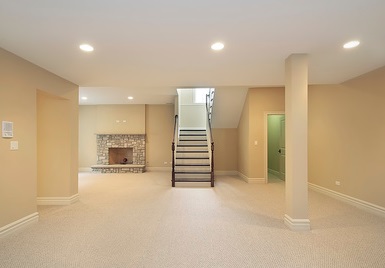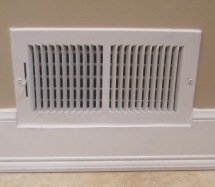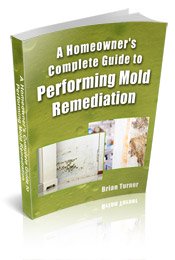Find a Mold Specialist Now
Click or Call, Toll-Free 24/7
Where Does Mold Grow?
Where does mold grow? Well, it can grow anywhere that is warm and moist. People often ask us how to find mold in home settings, because it can grow in so many places and it’s not always easy to spot. We’ll tell you where to look.
Where To Look
Mold can grow just about anywhere, but you’re most likely to find it in warm, damp places. Sometimes mold can be spotted easily, like when it’s growing on your bathroom floor, but in other cases it is hidden from view. A mold removal specialist that knows how to find mold in home settings can help you locate all the mold in your home if you aren’t sure you’ve found it all yourself.

Bathrooms
When asked where does mold grow, the first thing that comes to mind for many people is the bathroom. Mold is often found in bathrooms because showering makes the air warm and moist, perfect conditions for growing mold. In addition, ventilation is often poor, which also makes it easy for mold to grow. Cleaning up mold can be fairly easy if it’s growing on a tiled surface or other hard, non-porous bathroom surface.
Basements
In addition to bathrooms, when asked where does mold grow, people also frequently think of basements. Ideally, basements are dry places but in reality water sometimes seeps in around windows or through cracks in the foundation of the home. The reason so many basements smell musty is due to mold growth. If your basement smells musty but you can’t locate any mold, ask a professional that knows how to find mold in home hiding places to take a look for you.

Underneath Carpeting
If you see mold growing on the surface of your carpet, there is a very good chance it is growing underneath the carpet, as well. It’s impossible to clean all of the mold out of carpet, so it must be removed and discarded. If you have mold growing on the floorboards beneath, you’ll want to consult a professional about the best way to deal with that. In some cases, it is best to replace the moldy floorboards. In other cases, the moldy areas can be encapsulated, a technique in which a mold removal specialist paints over the mold with a special sealant so that it cannot grow or spread any further.
Inside Walls
If you see mold growing on a wall, mold may be growing inside the wall as well. A mold specialist will know how to find mold in home walls and how to eliminate it. Any moldy insulation must be removed and replaced, since there is no way to effectively remove the mold from the insulation. Moldy drywall or sheetrock should also be removed and replaced. If there is mold growing on any wall studs, that’s a bit trickier to deal with. In some cases mold can be removed by sanding the wood, but we recommend that only be done by a professional. In other cases, encapsulation is a good solution.
In Heating Ducts

When asked where does mold grow, people seldom think of their heating ducts. However, mold spores frequently drift in the air, in which case they can drift through heating vents and then mold can begin to grow inside your heating ducts. Unfortunately, it’s hard to determine whether or not there is mold growing in there, and if there is mold in there, it’s difficult to reach it in order to remove it. If you suspect you might have mold in your heating ducts, we recommend contacting a professional that knows how to find mold in home heating ducts and how to safely remove it if any mold is found.
Benefits of Consulting with a Mold Removal Specialist
- A specialist knows how to find mold in hard-to-reach places, including inside walls and in heating ducts. It’s hard to find mold in there, and even more difficult to thoroughly remove it. A specialist has the right equipment and knows how to complete the task.
- A specialist knows how to remove mold safely, without contaminating other areas of the home, and also has all the necessary safety gear.
- A specialist can advise you about how to prevent the return of mold growth after you’ve had the mold removed from your home. Resolving the problem that led to the growth of mold in the first place is important; otherwise the problem will just return.
- Mold removal specialists usually offer free consultations, so you can gain valuable insights about how to do the job even if you end up deciding to do the work yourself.
For a list of mold removal specialists offering free consultations in your area, follow this link.
Return From Where Does Mold Grow To Our Mold In Homes Page
Black Mold Health Symptoms Home Page





